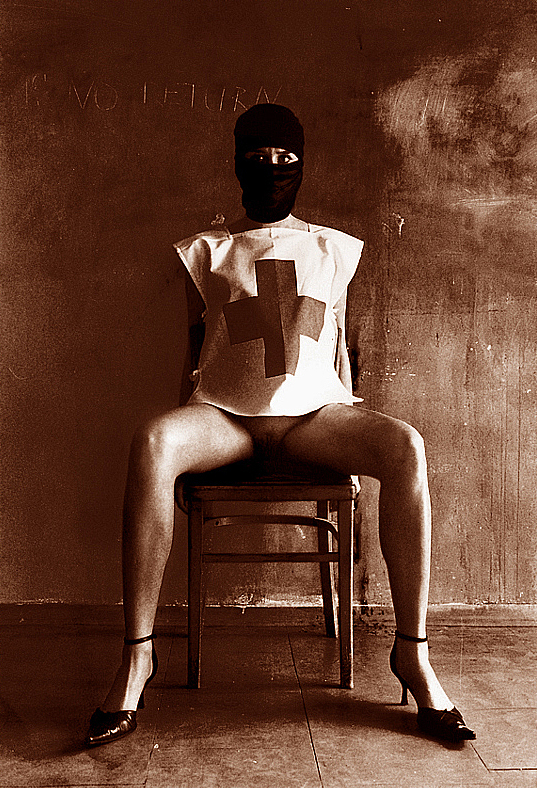At first glance, Monika K. Adler’s work recalls that of fellow eastern European photographer Jan Saudek. Solitary subjects, nostalgic sepia-tones, a focus on feminine beauty? in cell-like settings. But where Saudek’s caged birds exist in a timeless isolation, the outside world may more rudely intrude in Ms Adler’s tableaux vivants. At least that’s the case for the photo which became known as Mademoiselle Guillotine at its Paris exhibition earlier this year? The best example I have seen of her talent for finding a potent semiotic nexus.
The image shocks with the force of its clashing religious and cultural symbols, its dialectical dynamics of covered face, exposed genitals; naked beauty, naked vulnerability; sexual power, sexual humiliation. It alludes to the contemporary political context. The picture draws strong reactions from spectators, who suddenly find themselves voyeur/participants in a would-be war crime scene. Here we have the mainstay subject of the female nude updated to the unfortunate era of Abu Ghraib.
This work unites art and politics in the polemical style of John Heartfield’s anti-Nazi photomontages. It is a hyperrealist mise en scène with a lexicon drawn from news media iconography. It blurs photojournalism and art photography, stripping away manipulation and ideological pretence in the process. What’s left is a withering commentary, the coup de grace, delivered in the satirical title: Democracy. The irony is that where Saudek’s boldest work had humanity literally gazing into its own anus in the shadow of the Iron Curtain, the other side, Adler seems to retort, is only a rape scene.
Photography as a Weapon Of Resistance – Mark Birdsong, Paris, June 2005

